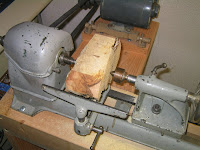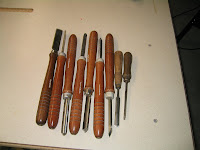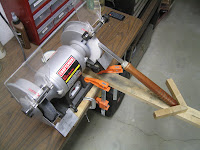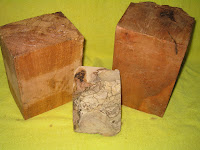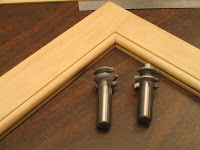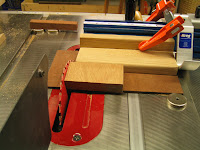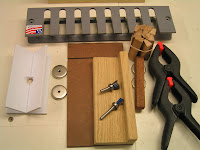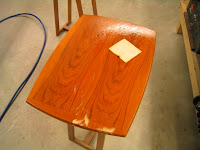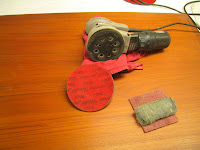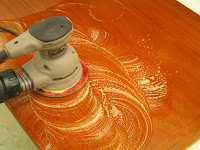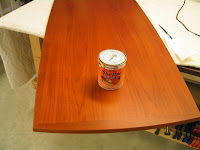Respect your Elders (Acer Negundo) Box Elder Silly!
 I had e-mailed Kevin and his Wife Terry at Powder Creek Sawmill, my goal, to take my turning up a notch! Sink my teeth into some of that beautiful Flame Box Elder. My expectation was a bowl between six to eight inches in diameter and two inches in height. Within a few days my little bundle of joy arrived.
I had e-mailed Kevin and his Wife Terry at Powder Creek Sawmill, my goal, to take my turning up a notch! Sink my teeth into some of that beautiful Flame Box Elder. My expectation was a bowl between six to eight inches in diameter and two inches in height. Within a few days my little bundle of joy arrived.Never before have I seen Box Elder up close and in person. I didn’t know what to expect. So down to the shop I go, draw my outline of a circle and band saw out (this step save you time on the lathe rounding your stock). Let me tell you something, put a piece of Flame Box in the lathe, see what happens to your heart rate. You pay attention brotha, you feel like your ready to play a fine musical instrument with thousands of people watching you. I have read how prized Flame Box Elder is to the turning junkies, trust me I’m about to find out why!
 After roughing the blank out. I was amazed what I saw. Interesting pattern’s colors, even two insect holes. I wasn't expecting the finest qualities that nature had to offer. Think about it, I have spalt, curl and red flame all in one small block. So for about $30.00 will fetch you a nice piece like this.
After roughing the blank out. I was amazed what I saw. Interesting pattern’s colors, even two insect holes. I wasn't expecting the finest qualities that nature had to offer. Think about it, I have spalt, curl and red flame all in one small block. So for about $30.00 will fetch you a nice piece like this. Sprayed with a weak dye (a couple drops of Trans Tint Honey Amber to a full coffee cup of lacquer thinner, could use alcohol, however, lacquer thinner will dry quicker).
Sprayed with a weak dye (a couple drops of Trans Tint Honey Amber to a full coffee cup of lacquer thinner, could use alcohol, however, lacquer thinner will dry quicker).
 With the dye completely dry, I oiled the dye in with General Finishes Seal-A-Cell. A light scuff with 320 foam-backed paper to the dry oiled surface then I shoot one coat of a two pound cut of blond de-waxed shellac, locks everything down and readies the surface for the water based topcoat.
With the dye completely dry, I oiled the dye in with General Finishes Seal-A-Cell. A light scuff with 320 foam-backed paper to the dry oiled surface then I shoot one coat of a two pound cut of blond de-waxed shellac, locks everything down and readies the surface for the water based topcoat. Scuff the dry shellac with 320 foam-backed paper, then apply five topcoats by hand using a cotton rag with General Finishes water-based High Performance Satin. Make sure to scuff with 320 between each coat. Once the topcoat has thoroughly cured. I rubbed out the bowl with a 2000 grit Abralon pad and finish off with a coat of wax.
Scuff the dry shellac with 320 foam-backed paper, then apply five topcoats by hand using a cotton rag with General Finishes water-based High Performance Satin. Make sure to scuff with 320 between each coat. Once the topcoat has thoroughly cured. I rubbed out the bowl with a 2000 grit Abralon pad and finish off with a coat of wax.
